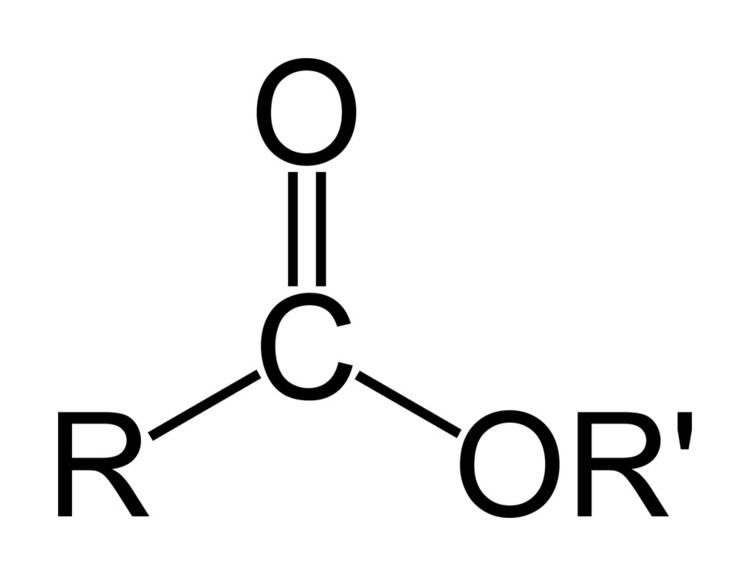 | ||
A lipase (/ˈlaɪpeɪs/, /ˈlɪpeɪs/, /-peɪz/) is any enzyme that catalyzes the hydrolysis of fats (lipids). Lipases are a subclass of the esterases.
Contents
- Structure and catalytic mechanism
- Physiological distribution
- Human lipases
- Industrial uses
- Diagnostic use
- Medical use
- References
Lipases perform essential roles in the digestion, transport and processing of dietary lipids (e.g. triglycerides, fats, oils) in most, if not all, living organisms. Genes encoding lipases are even present in certain viruses.
Most lipases act at a specific position on the glycerol backbone of a lipid substrate (A1, A2 or A3)(small intestine). For example, human pancreatic lipase (HPL), which is the main enzyme that breaks down dietary fats in the human digestive system, converts triglyceride substrates found in ingested oils to monoglycerides and two fatty acids.
Several other types of lipase activities exist in nature, such as phospholipases and sphingomyelinases, however these are usually treated separately from "conventional" lipases.
Some lipases are expressed and secreted by pathogenic organisms during an infection. In particular, Candida albicans has a large number of different lipases, possibly reflecting broad-lipolytic activity, which may contribute to the persistence and virulence of C. albicans in human tissue.
Structure and catalytic mechanism
Although a diverse array of genetically distinct lipase enzymes are found in nature; and, they represent several types of protein folds and catalytic mechanisms, most of them are built on an alpha/beta hydrolase fold and employ a chymotrypsin-like hydrolysis mechanism using a catalytic triad consisting of a serine nucleophile, a histidine base, and an acid residue (usually aspartic acid).
Physiological distribution
Lipases are involved in diverse biological processes which range from routine metabolism of dietary triglycerides to cell signaling and inflammation. Thus, some lipase activities are confined to specific compartments within cells while others work in extracellular spaces.
Human lipases
The main lipases of the human digestive system are pancreatic lipase (PL) and pancreatic lipase related protein 2 (PLRP2), which are secreted by the pancreas. Humans also have several other related enzymes, including hepatic lipase, endothelial lipase, and lipoprotein lipase. Not all of these lipases function in the gut (see table).
Other lipases include LIPH, LIPI, LIPJ, LIPK, LIPM, LIPN, MGLL, DAGLA, DAGLB, and CEL.
There also are a diverse array of phospholipases, but these are not always classified with the other lipases.
Industrial uses
Lipases serve important roles in human practices as ancient as yogurt and cheese fermentation. However, lipases are also being exploited as cheap and versatile catalysts to degrade lipids in more modern applications. For instance, a biotechnology company has brought recombinant lipase enzymes to market for use in applications such as baking, laundry detergents and even as biocatalysts in alternative energy strategies to convert vegetable oil into fuel. High enzyme activity lipase can replace traditional catalyst in processing biodiesel, as this enzyme replaces chemicals in a process which is otherwise highly energy intensive, and can be more environmentally friendly and safe. Industrial application of lipases requires process intensification for continuous processing using tools like continuous flow microreactors at small scale. Lipases are generally animal sourced, but can also be sourced microbially.
Diagnostic use
Blood tests for lipase may be used to help investigate and diagnose acute pancreatitis and other disorders of the pancreas. Measured serum lipase values may vary depending on the method of analysis.
Medical use
Lipase can also assist in the breakdown of fats into lipids in those undergoing pancreatic enzyme replacement therapy(PERT). It is a key component in Sollpura (Liprotamase).
